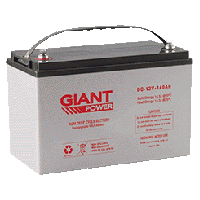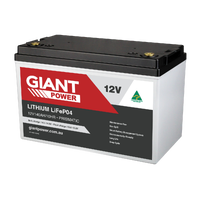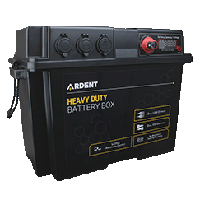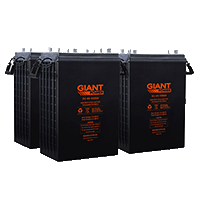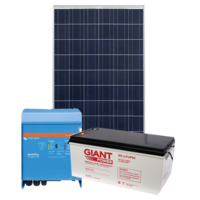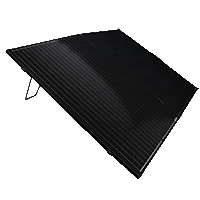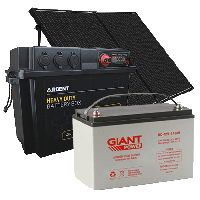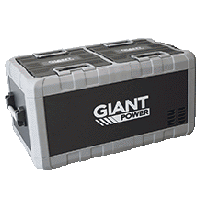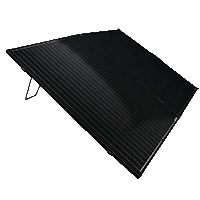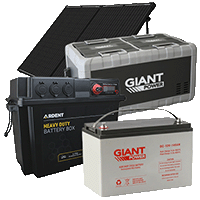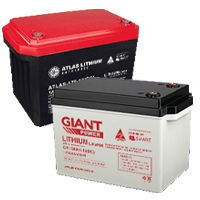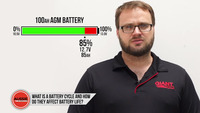What Size Battery Do I Need to Run My Gear?
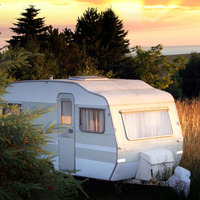
For many campers, deciding how many batteries are needed to power their gear during camping trips can be challenging. Maybe you even experienced a few holidays where you regretted not taking a larger battery, or more batteries. On other occasions, you may have had larger deep cycle batteries when you could have used smaller ones. In this post, we share a simple formula to help you calculate an estimate of amp hours you need, so you won’t have to second guess yourself again.
Some key points to consider before purchasing deep cycle batteries
How long are you away from mains power?
The more hours of battery power you require without charging, the bigger your battery has to be. The size of your battery will also depend on the kind of appliances you want to run off it; heavy power users will need a larger battery to safely drain power without damaging the battery. Tubular gel deep cycle batteries offer the best solution for long term power storage.

How much power do you want to use at once?
If you like to run multiple power hungry appliances at the same time, you’ll need to upgrade your system. Even if you’re expecting to use a lot of power for just a short amount of time, it is recommended to use a large battery bank to prevent damage to your batteries.
Are you able to charge your batteries while camping away from mains power?
If you are able to charge your batteries, either through solar panels or a generator, a smaller battery can often be enough. Keep in mind that bad weather conditions may affect the efficiency of solar panels, and may not fully charge your battery. Another factor to consider is how much power autonomy you desire without charging. The longer you want (or have) to go without charging your battery, the larger it needs to be.
How often do you want to use your battery?
The more you drain out of your battery each time before charging it, the shorter its life span will be. If you only need it for a short caravanning trip once or twice a year, you can still get many years out of your battery when taking it down to 80% depth of discharge (20% capacity left). However, if your battery operates on a more regular basis, draining it to 50% of its capacity should be fine, although it will live longer if you charge it after using only 30% (70% capacity left). Note: Always make sure to recharge your battery reasonably soon after use, as leaving a discharged battery low will cause damage.
Which battery size do I need?
To work out which size of deep cycle battery to use, you will need to know the watts or amps of the appliances you’d like to run. If you know one of them, you’ll be able to estimate the correct battery size for your needs. To make a fairly accurate estimation, you’ll also need to consider the appliances’ running time.
1) Estimated running time
Look for the watt rating of your appliances, and make an estimate of how long the appliance will run in one day. Keep in mind that not all appliances constantly need power. For example, a fridge only draws power when the compressor is running.
Example:
35W portable fridge/freezer: estimated run time 10 hours
(fridges this size would typically run the compressor for an average of 8 to 12 hours per day)
20W lighting: estimated run time 4 hours
2) Calculate the watt hours for each appliance
Simply multiply the wattage with the duration of use to discover your device’s watt hours (Wh).
Example:
Portable fridge/freezer: 35W x 10h = 350Wh
Lighting: 20W x 4h = 80Wh
3) Total power consumption
Now you have the Wh for each appliance, you can add them together to reach an estimate of your total power consumption.
Example:
350Wh + 80Wh = 430Wh
4) Convert to amp hours
A battery’s capacity is rated in amp hours (Ah). As such, you’ll need to convert your total Wh to Ah. You can do this by dividing the watt hours by the battery voltage. You’ll also want to include your ideal depth of discharge (what percentage you want to drain from the battery before charging it). The formula is then: Wh / battery voltage / DOD.
Example:
430Wh / 12V / 0.3 DOD = 119Ah
You now have an estimate for the battery size you need.
Note: It is important to consider that this estimate will change if you decide to constantly charge your battery through solar panels. As such, you can often get away with a smaller battery. To work out how much power your solar will be putting back into your batteries, you can have a look at our guide ‘How Do You Work Out How Much Solar You Need to Run Your Gear?’ .
General Guide to Battery Sizing
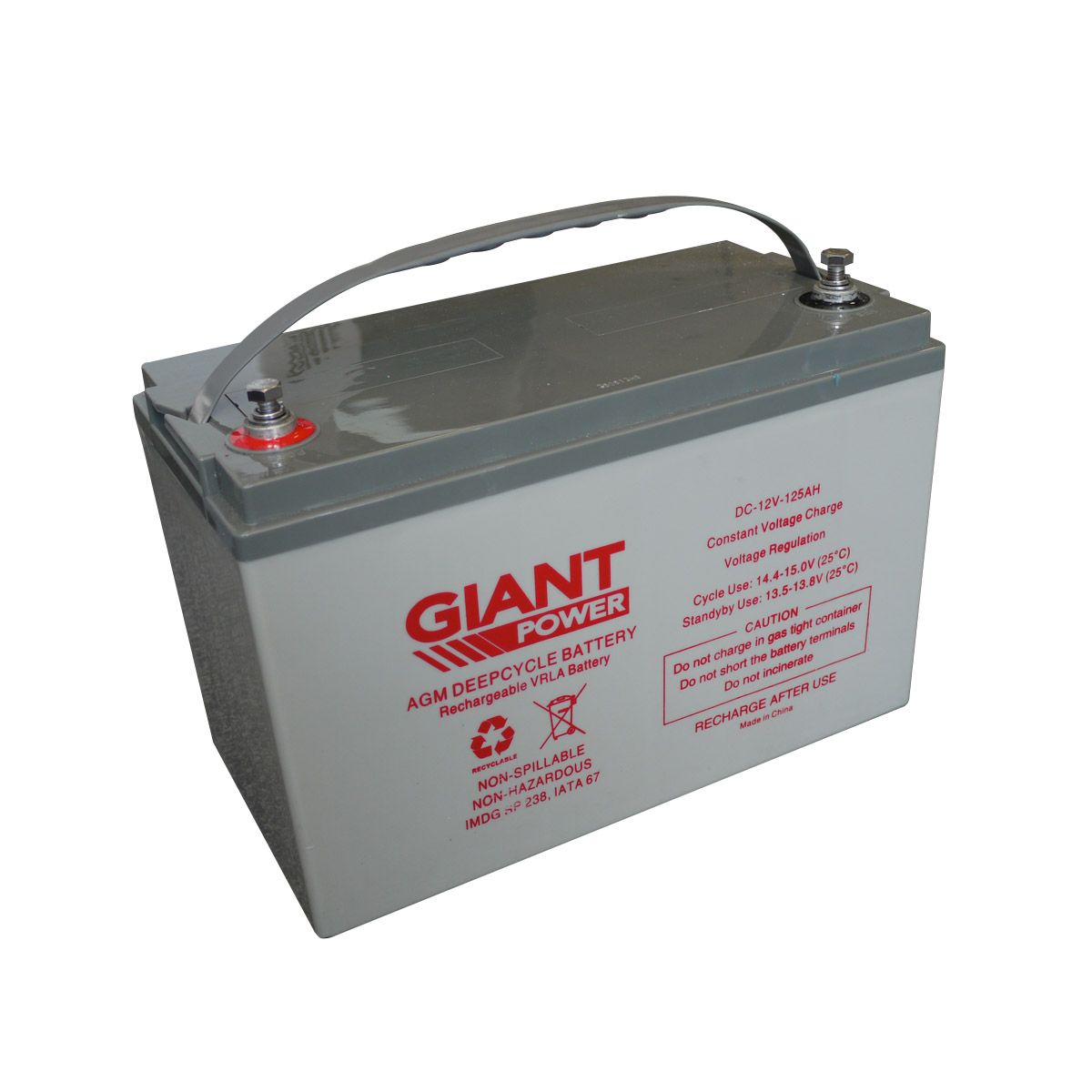
If you don’t have all the information to complete the calculation, our general battery guide may help you out.
AGM deep cycle batteries:
<100Ah: mobility scooters, small fridges
105Ah – 200Ah: most camping setups (e.g. portable fridge/freezers, lights, and small inverters)
205Ah – 300Ah: caravan and boats
>300Ah: 5th wheelers and motorhomes
Tubular gel deep cycle batteries:
Small (<500Ah): larger boats, holiday shacks, and small off grid homes
Large (>500Ah): large off grid systems
As a basic rule of thumb, you can remember that a 100Ah AGM deep cycle battery can provide 1 amp for 100 hours, 2 amps for 50 hours, 3 amps for 33 hours,... Keep in mind this is a rough estimate, as the battery capacity will change a little depending on how fast your battery is being drained.
April 2, 2015 | By Aussie Batteries | Comments

